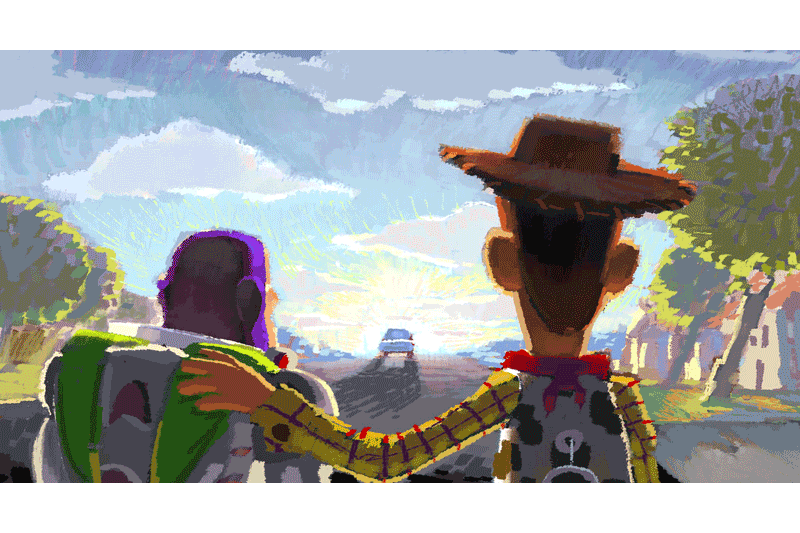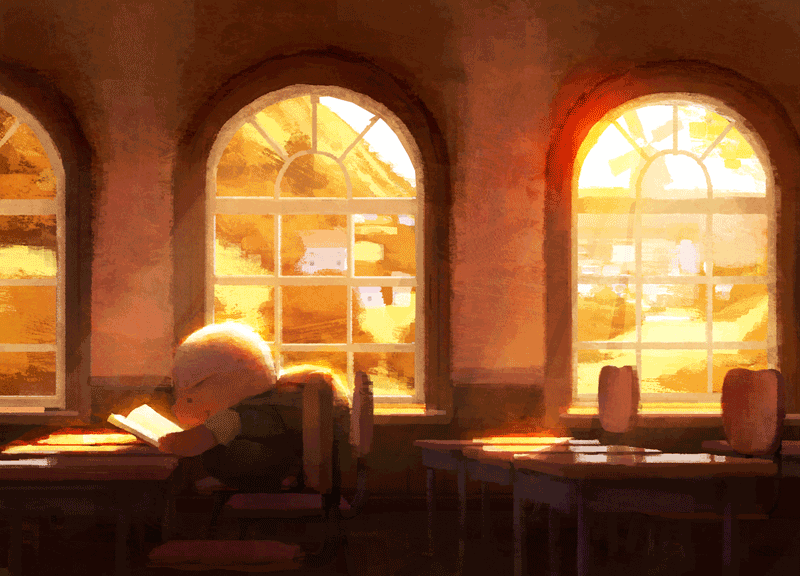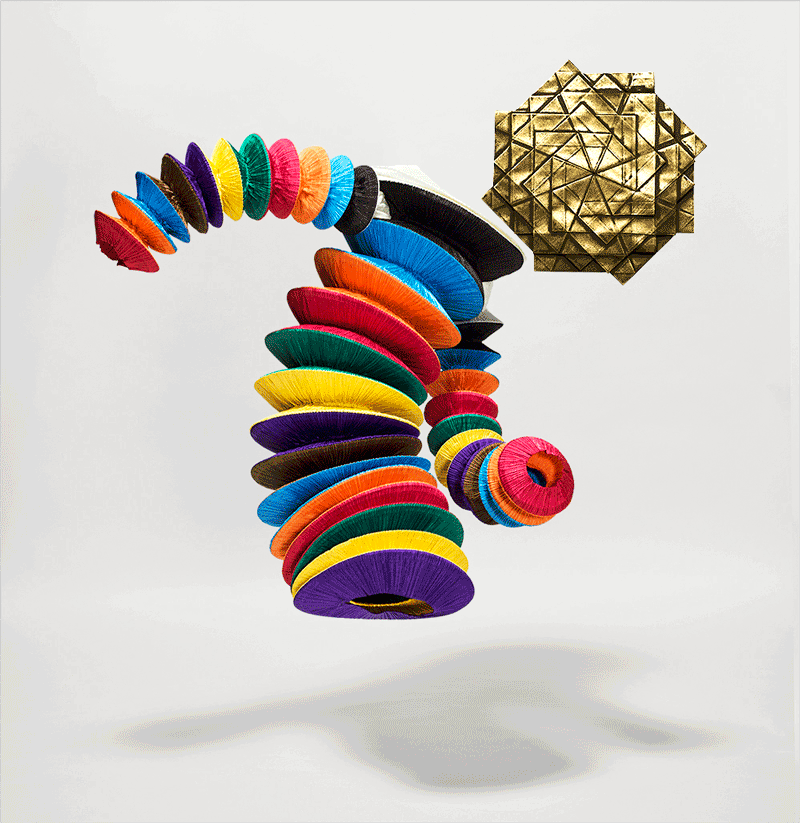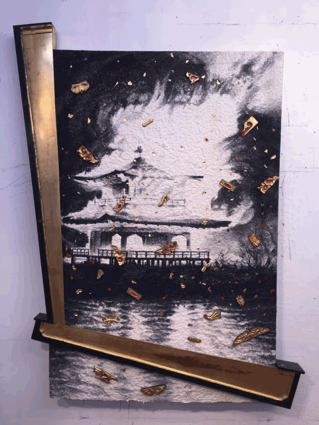This April’s Gallery Guide celebrates the joy of creation through four exhibitions that give visitors an insight into the process of shaping pure imagination into a finished product.
By Luca Eandi
PIXAR: 30 YEARS OF ANIMATION
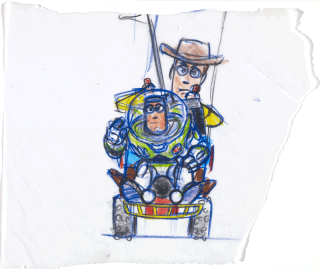
Bob Pauley, “Woody and Buzz, Toy Story,” 1995, Reproduction of marker and pencil on paper ©Disney/Pixar
Just in time for the Japanese premiere of “The Good Dinosaur” in mid-March (a full 16 weeks after its release in the rest of the world), “PIXAR: 30 YEARS OF ANIMATION” debuts at MOT. A version of this exhibition has been traveling the globe since 2005, when it began as a special display at the Museum of Modern Art in New York. It features hand-drawn sketches, paintings, storyboards, color scripts, and character models created by the studio’s artists.
Although Pixar is best known for its slick computer graphics and advanced image rendering, most of its character and story development is done through traditional media. The studio employs a large number of accomplished artists who create the hand drawings, paintings, pastels and sculptures used as reference in the early stages of production. Lee Unkrich, director of the massive hit sequel, “Toy Story 3,” said the following about Pixar’s commitment to conventional design methods: “our films are very high-tech, but at their core the story and characters spring from imagination and pencil and paper.”
Pixar’s entire 30-year history of memorable characters and compelling stories are represented at MOT, starting with their first short film, “Luxo Jr.” (featuring the desk lamp from their logo), and going all the way up to their latest feature length, “The Good Dinosaur.” Some 500 pieces make up the collection, including two large installations exclusive to the traveling exhibit.
Museum of Contemporary Art Tokyo
Dates: March 5–May 29, 2016
Open: 10:00–18:00, last admission 30 minutes before closing,
closed Mondays (except May 2, 23)
Web: http://pxr30.jp/
Tonko House Exhibition: “The Dam Keeper’s Journey”
Fitting nicely with the Pixar retrospective at MOT, Creation Gallery G8 in Ginza is holding a similar exhibition titled “The Dam Keeper’s Journey.” After collaborating on “Toy Story 3” and “Monsters University,” a couple of former Pixar Animation Studios art directors, Tokyo native Daisuke Tsutsumi and Southern California’s Robert Kondo, decided to strike out on their own, founding animation studio Tonko House in 2014. Their first animated short film, “The Dam Keeper,” which tells the tale of a pig who keeps pollution at bay with his windmill, blew critics away with its moody, muted visual style and poignant story, earning an Academy Award nomination in 2014.
This exhibition, Tonko House’s first public display, features artwork that evokes the worldview expressed in the film, in addition to character designs, maquettes (models), as well as visual narrative elements tracing the film’s story. Also on display will be new works, including collaborations created especially for the show—one with Japanese stop-motion animation studio, Dwarf, and another with miniature diorama artist Satoshi Araki. Additionally, Tonko House projects currently in the pipeline, including a feature-length sequel to “The Dam Keeper,” will be introduced in a space recreating the interior of their California studio.
Creation Gallery G8
Dates: March 25–April 28, 2016 | Open: 11:00–19:00, closed Sundays
Web: rcc.recruit.co.jp/g8/en
Miyake Issey Exhibition: The Work of Miyake Issey
Fashion icon Issey Miyake designed the black mock turtlenecks that Steve Jobs famously wore as his uniform. As the story goes, the Apple/Pixar founder toured a Sony facility in Japan in the 1980s and admired the uniforms worn by the workers. He found out they were designed by Miyake, so he sought him out and struck up a friendship with the designer. He initially wanted him to create uniforms for Apple employees—an idea that never took off with his Cupertino staff. Nonetheless, Jobs received hundreds of Miyake turtlenecks for himself, and along with a pair of Levi’s 501 jeans, they became part of his defining look.
It’s easy to see the kinship between Jobs and Miyake, as both were obsessed with innovation and good design. Miyake’s 45-year career to present has been a study of the relationship between body and fabric. He’s never stopped searching, constantly examining new manufacturing methods, trying to achieve perfection through innovation, often by using only one piece of cloth. Most recently, his focus has shifted to using recycled materials and shapes inspired by algorithms and geometric shapes.
This exhibition, the first to span his entire career, is a large-scale appraisal of his overall creative development. Production processes and the evolution of his style are given thoughtful consideration as visitors move through the three rooms that make up the exhibit.
The National Art Center, Tokyo
Dates: March 16–June 13, 2016
Open: 10:00–18:00, 10:00–20:00 on Fridays, last admission 30 minutes before closing, closed Tuesdays (except May 3)
Web: http://2016.miyakeissey.org
Daniel Kelly’s Golden Touch
Over the past decades, American-born, Kyoto-based artist Daniel Kelly has been building a name for himself as a gifted painter and printmaker who also isn’t afraid to think, paint, and print outside the box. Kelly has moved from “traditional” printmaking techniques to printing on roughly textured paper and massive sheets that can stretch as long as 190 cm to a side. His paintings, on the other hand, challenge the notion of the medium being a two-dimensional one. Rather than painting on standard canvases, Kelly often uses a collection of found objects—frames from traditional Japanese doors and old tatami mats, for example—and incorporates them into the canvas, creating pieces that are as much sculpture as they are painting. In both print and painting, he uses familiar imagery but presents it in a way that forces viewers to reflect on their own perceptions.
For 10 days, the Tolman Collection will be presenting an exhibition at the Conrad Hotel that features dozens of Kelly’s larger pieces. (This is not the first time that an artist that Tolman represents has shown at the upscale hotel: centenarian Toko Shinoda held a retrospective there last year, and one of her pieces can be found in the Conrad’s lobby.) In addition to many of the artist’s prints and paintings at the show, keep an eye out for the visually arresting “Bold Is Better,” shown above.
Conrad Tokyo
Location: 105-7377 Minato-ku, Higashi-Shinbashi 1-9-1
Dates: April 27–May 8, 2016
Open: 11:00–19:00
Web: www.tolmantokyo.com
Main Image: Robert Kondo, “Goodbye Andy, Toy Story 3,” 2010 Digital painting ©Disney/Pixar

